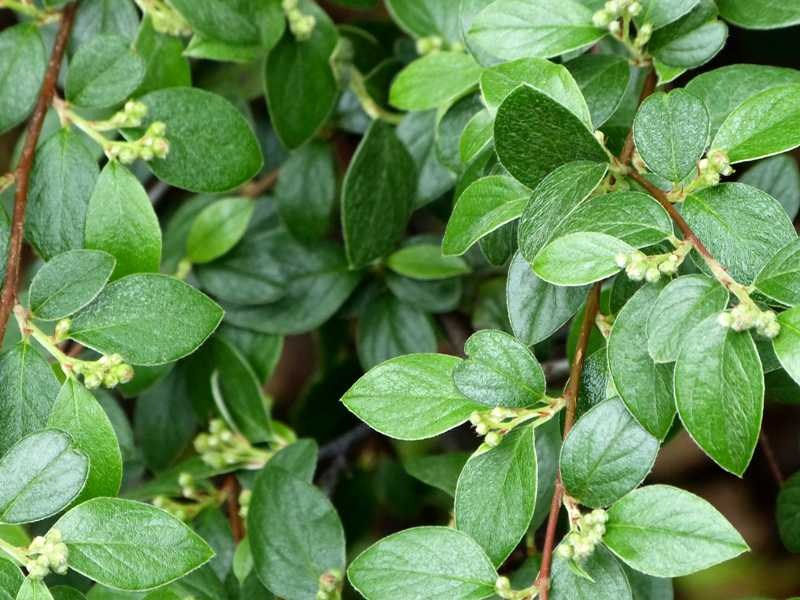Cotoneaster (Cotoneaster franchetii)
Cotoneaster
Cotoneaster franchetii, commonly called gray cotoneaster or orange cotoneaster, is an evergreen to semi-evergreen shrub that typically grows to 10′ tall with cane-like upright-arching branches. It is native to southwestern China, Myanmar and northern Thailand. Deeply veined elliptic to oval leaves (to 1 1/2″ long) are glossy gray-green above with a white felty pubescence beneath. Some leaves turn yellow with reddish streaks in fall. Near the northern edge of winter hardiness (USDA Zone – , this shrub is basically deciduous. Tiny pink and white 5-petaled flowers (each to 1/3″ diameter) bloom in early summer (July) along the branches in 5-15 flowered corymbs. Flowers give way to rounded, long-lasting, red-orange berries (1/4″ pomes) which ripen in September and October, with some berries persisting on the bush through winter. Fruit is poisonous to humans. Gray cotoneaster has escaped gardens and naturalized in Washington, Oregon and California. It is currently considered to be moderately invasive by the California Invasive Plant Council.
Genus name comes from the Latin cotonea meaning “quince” and aster meaning “resembling” or “similar to”.
Specific epithet honors French botanist Adrien Rene Franchet (1834-1900) who is noted for his work describing the flora of China and Japan.

Best grown in moist, moderately fertile, well-drained loams in full sun to part shade. Good soil drainage is important. Tolerates dry soils. Avoid wet, poorly-drained soils. This is a tough and adaptable plant that can withstand poor soils, including rocky ones. Propagate by stem cuttings or seed. Plants have escaped cultivation and naturalized in California, Oregon and Washington by a variety of means including birds, mammals, water currents and human activity.
| Hardiness zone | 6 - 9 |
| Sun light | Full sun to part shade |
| Water | Medium |
| Maintenance | Low |
Susceptible to fireblight which can be particularly troublesome in hot southern areas. Leaf spots and canker. Potential insect problems include cotoneaster webworm and lacebug. Watch for mites, particularly in hot and dry growing conditions. Dense foliage can present maintenance problems because of the difficulty of cleaning dead leaves and trash from the interior of a planting.
This cotoneaster is an interesting landscape plant that offers good foliage, small but attractive flowers and showy red fruit. Woodland gardens. Hedge. Good in small groups. Do not plant in areas where invasive spread is a potential problem.
| Common name | Cotoneaster |
| Botanical name | Cotoneaster franchetii |
| Plant type | Deciduous shrub |
| Family | Rosaceae |
| Hardiness zone | 6 - 9 |
| Water | Medium |
| Maintenance | Low |
| Flower color | Pink and white |
| Flowering period | July |
| Height | 6 - 10 ft. |
| Width | 4 - 8 ft. |